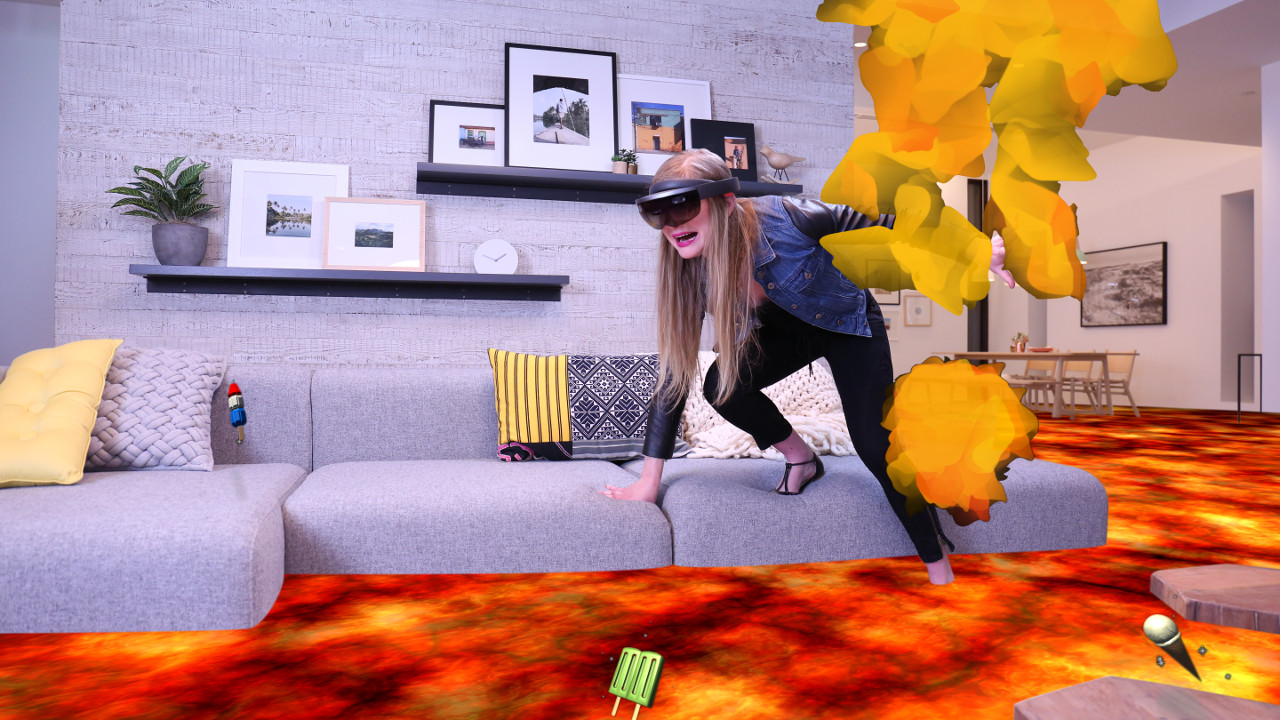Microsoft's HoloLens Gets Jerry-Rigged 'Spectator View'
It's hard to make virtual reality, augmented reality, or mixed reality look cool. The experiences themselves can be fascinating to whoever dons an HMD, but to bystanders, using these devices is like watching a cyborg have a mental breakdown. Microsoft wants to make its upcoming HoloLens a little bit easier to grok, so it's published a step-by-step guide to setting up what it calls "Spectator view" to let HoloLens users better share their experiences.
HoloLens itself has been shown off to the public in different ways. The first demo, which we saw at Build 2015, took place in small hotel rooms devoid of any recording equipment. A year later we saw more spectacular demo at Build 2016 with many different stations, and Microsoft has steadily released videos showing the AR headset in action. But those are the efforts of a giant tech company; how's the average Joe supposed to show off the wondrous potential of AR?
If this new Spectator view is any indication, the answer is "not easily." Microsoft distilled the setup down to four key points on its developer website:
An app built specifically to enable spectator view, which is based on shared holographic experiences.A user wearing HoloLens using the app.A spectator view camera rig providing a third-person perspective video.A desktop PC running the shared experience app and compositing the holograms into a spectator view video.
The actual setup requires a little more work than that list implies. Microsoft provided an eight-part hardware shopping list; seven different software components; and a multi-step guide to setting up the camera rig. From there, HoloLens users have to calibrate the system and set up a Unity extension that combines what the AR headset displays and what's happening in the real world. Don't expect to get Spectator view working in just a few minutes.
But that's unlikely to deter HoloLens owners. Dev kits started to ship in March 2016 for $3,000 each--the parts needed to provide a high-end MR experience aren't cheap--and the product hasn't been commercially released. Anyone who a) owns HoloLens and b) wants Spectator view is probably comfortable with building a camera rig and fiddling with a bunch of software until it works. Now's the perfect time for jerry-rigged solutions like this.
The full guide to setting up Spectator view is available on Microsoft's dev site. The company also made a video about the rig-building process.
Get Tom's Hardware's best news and in-depth reviews, straight to your inbox.

Nathaniel Mott is a freelance news and features writer for Tom's Hardware US, covering breaking news, security, and the silliest aspects of the tech industry.

